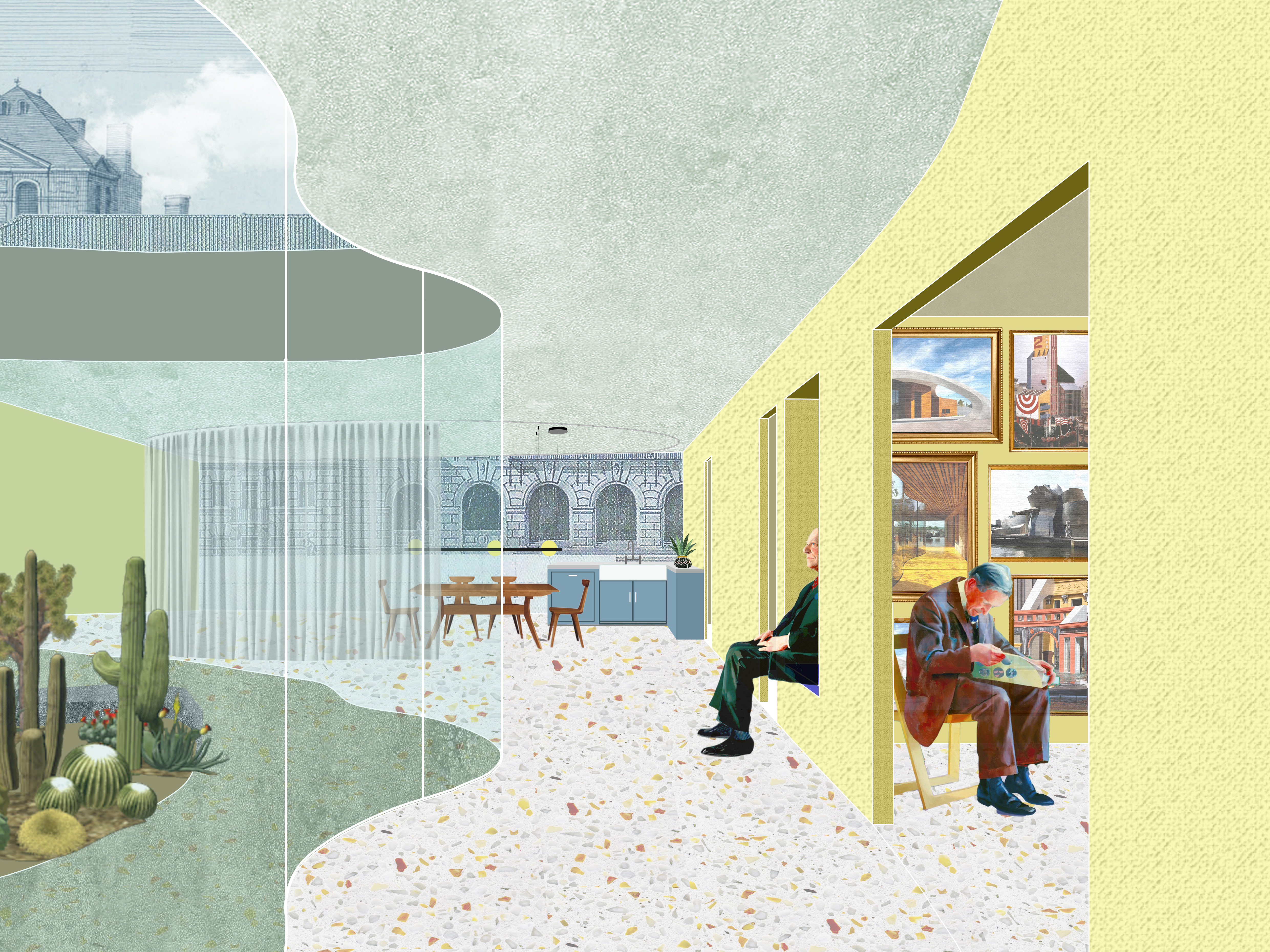Research & advice
Studio Care Architecture
Gideon Boie
2019-2021, KU Leuven

Image: Heleen Verheyden
Innovation in care architecture today is hampered by the typology of the bed house. The typology stems from hospital complexes and is a literal translation of the number of beds available, this is the calculation unit for government funding. The result is a complex of serial rooms and interlinked corridors. Also a complex with generic qualities, it does not matter whether residents are bedridden or not, the psychiatric clinic can easily serve as maternity ward tomorrow.
The indifferent logic of the bed house produces paradoxical situations in the different domains of care. In psychiatric crisis care a lot of energy goes into the setup of new relationships between caretaker and caregiver, focusing on hospitality and comfort, and yet the building still radiates an atmosphere of control and coercion. In children and youth psychiatry the bed house logic contradicts the ambition to create holding environments with safe space for play.
The corona crisis highlighted the problem of the bed house in the context of elderly care. Although the construction of care homes was meant to normalize elderly care and create a homely atmosphere, the lockdown showed how underneath the architecture was still based on the typology of the bed house. The elderly care homes got closed off easily from one day to the other, again drawing a clear line of separation between the fit and sick ones and turning into small hospitals.
In this studio we will examine the architectural and spatial logic of the bed house in different contexts. Instead of thinking in terms of a single design finally solving all problems in health care, we will construct design intelligence – a term coined by Michael Speaks – through the combination of case studies of best practices, study of international literature and, most importantly, the engagement with real life people living and working in care facilities.
The studio assignment will be developed in close collaboration with care centers in/around Ghent (such as KARUS, Psychiatric Centre Dr. Guislain and others) where design processes are ongoing, just started or upcoming. The needs and desires of doctors, managers, staff and patients will lead us the way. An inventory on space perception and use experience will be made using methods of participative observation, in‐depth interviews and biographical cartography.
The general framework of the research is the search for the reduction of coercion and compulsion in psychiatry, more specifically in both crisis care as youth care. Key references in the following reform of crisis care in psychiatry are the High & Intensive Care model (Tom Van Mierlo and Yolande Voskes) and theories about holding environments (D.W. Winnicott), Safewards (Len Bowers). Other relevant care models are Open Dialogue (Jaakko Seikkula) and Soteria (Loren Mosher).
We will add references by delving into architectural theory and practice, a.o. the ideas of healing environment, the work on the architecture of hope by Charles and Maggie Jencks, the recent publication X‐Ray Architecture by Beatriz Colomina, the work on hospital architecture by Noor Mens and Cor Wagenaar. Of course we cannot but take a look into the philosophical standard work on the birth of the clinic and on madness and civilization by Michel Foucault.
The design research will be carried out at various scale levels. The logic of the bed house cannot be disconnected from issues part of the urban planning of the hospital campus neither from the interior design of the care facilities. Innovation in care architecture thus also forces us to face questions about the resocialization of campuses, normalization of furniture and related issues.
The Studio Care Architecture is a master course organised in the Academic Year 2019-2021, Semester 1, at the KU Leuven Faculty of Architecture campus Ghent, as part of the Mediating Tactics engagement. Tutors: Gideon Boie and Layla Lavens
Tags: Care, English, Psychiatry
Categories: Architecture
Type: Research & advice